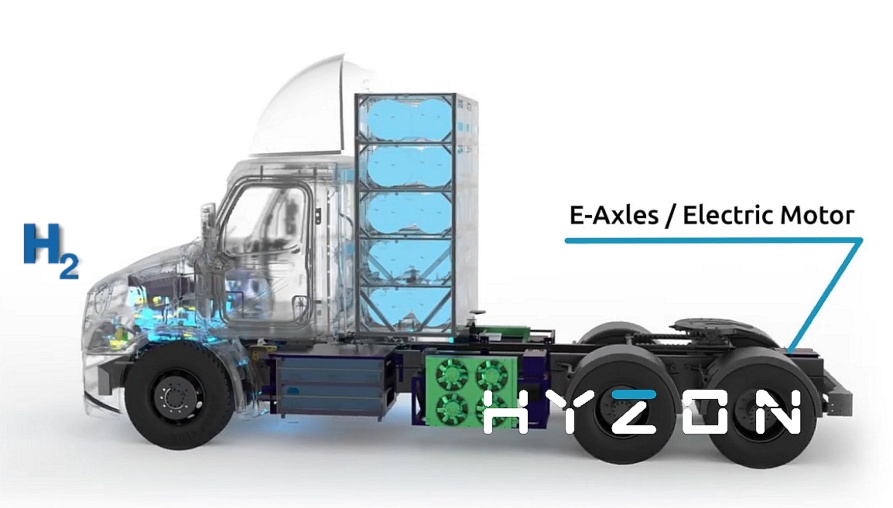There’s more than one way to do no-emissions transportation.
The first time Rodrigo Peña climbed into the Hyzon truck’s cabin and eased his foot off the break, it wasn’t the awe of being inside the first hydrogen-powered freight truck to be operated in Texas that struck him.
It was the silence.
“I could hear rocks pinging off the gravel in the yard — I could hear people blocks away,” he said. “It was like being in a huge golf cart.”
Peña and two other drivers for logistics company Talke will drive the Lone Star State’s inaugural hydrogen-powered freight truck route, delivering plastic resins from Mont Belvieu to the Port of Houston for Exxon Mobil as part of a two-week pilot.
While the pilot is temporary, civic and corporate leaders along the Ship Channel expect it to help jumpstart new investments and government incentives aimed at using hydrogen to help decarbonize the shipping and trucking sectors. Five entities, including the University of Texas at Austin, Chevron, Air Liquide and the Center for Houston’s Future announced last month that they had applied to the U.S. Department of Energy to be designated as one of as many as 10 regional clean hydrogen hubs, a distinction that could bring the region a slice of $7 billion in federal funding for hydrogen projects.
Subsidies like that will be key to get hydrogen trucking off the ground, said Parker Meeks, president and interim CEO of Mendon, New York-based Hyzon Motors. He said the hydrogen hub funding would help on the fuel side, but it doesn’t include funding for the trucks. That changed with the Inflation Reduction Act signed into law this year, which will pump $400 billion into clean energy funding, including funding to help lower emissions at ports.
“This transition at the start is quite expensive, and if we put all that on operators it will take a long time,” Meeks said. “We don’t anticipate being on subsidy longer than we need to, but the IRA gives us that immediate opportunity. We always planned on getting a truck to Houston, and that time is now that we’re getting that subsidy money to Houston.”
Houston is already the largest producer of hydrogen in the country, used largely for refining and petrochemical processes. But the region, and much of the country outside of California, lacks the infrastructure to make it feasible for use in freight trucks or cargo ships. Even the hydrogen used for the Port of Houston pilot projected was shipped from an Air Liquide facility in North Las Vegas, Nevada, even though an Air Liquide facility produces hydrogen just up the road in La Porte.
The Nevada facility is one of a handful of sites in the country that can liquify hydrogen, packaging it at a pressure of 7,500 pounds per square inch, said Laura Parkan, Air Liquide’s vice president of hydrogen energy for the Americas. Only three hydrogen fueling stations exist for heavy trucks, all in the greater Los Angeles area.
This was a two-week pilot program, and I drafted this before Christmas so you probably missed it. But hydrogen power makes sense for larger vehicles, because they can require batteries that are too large to be of practical use. This is one reason why Metro is seeking to test hydrogen-powered buses along with electric buses, as they look for alternatives to fossil fuels. Another consideration is the ability of the electric grid as it now exists to handle a new fleet of electric trucks. I’m of the belief that we should be open to all reasonable options. If that also turns out to be a boon for Houston and the result of the Biden infrastructure bill, so much the better.

